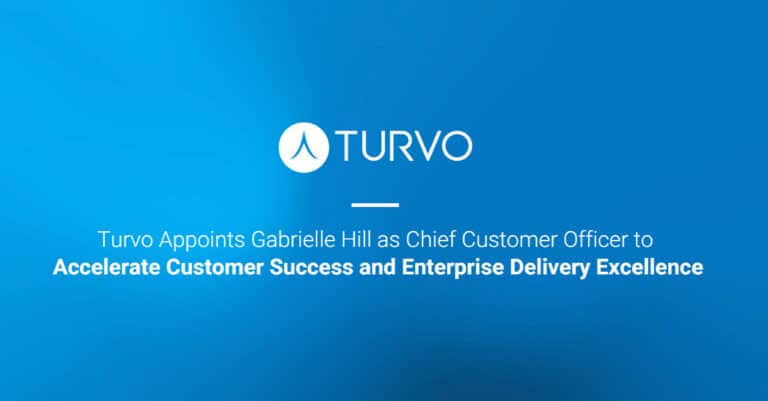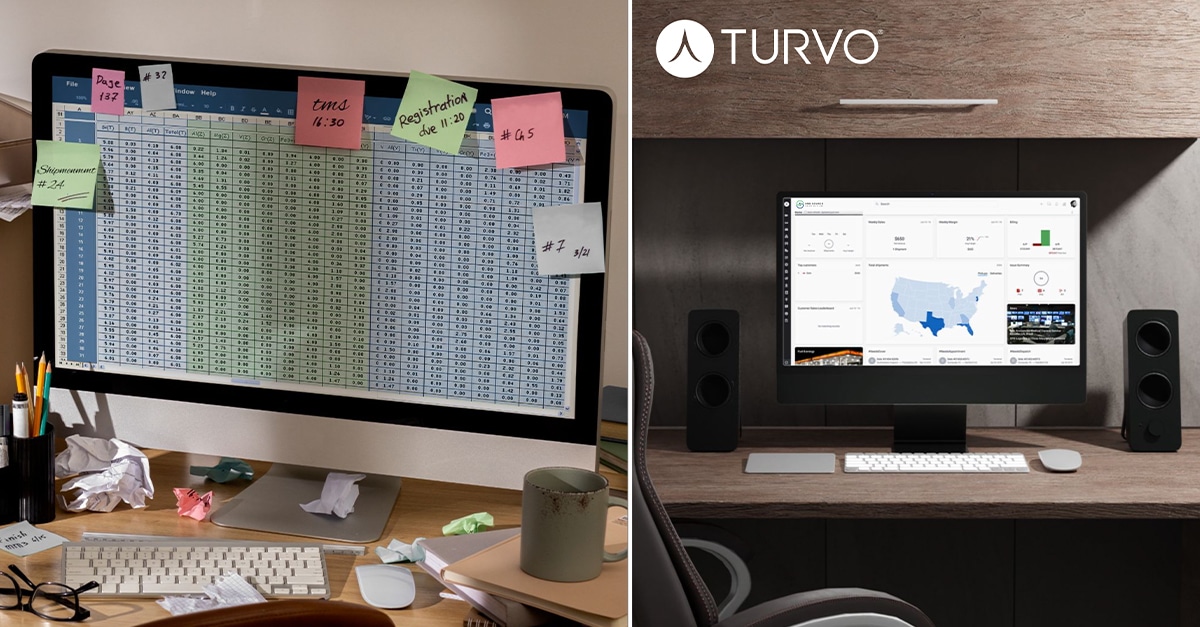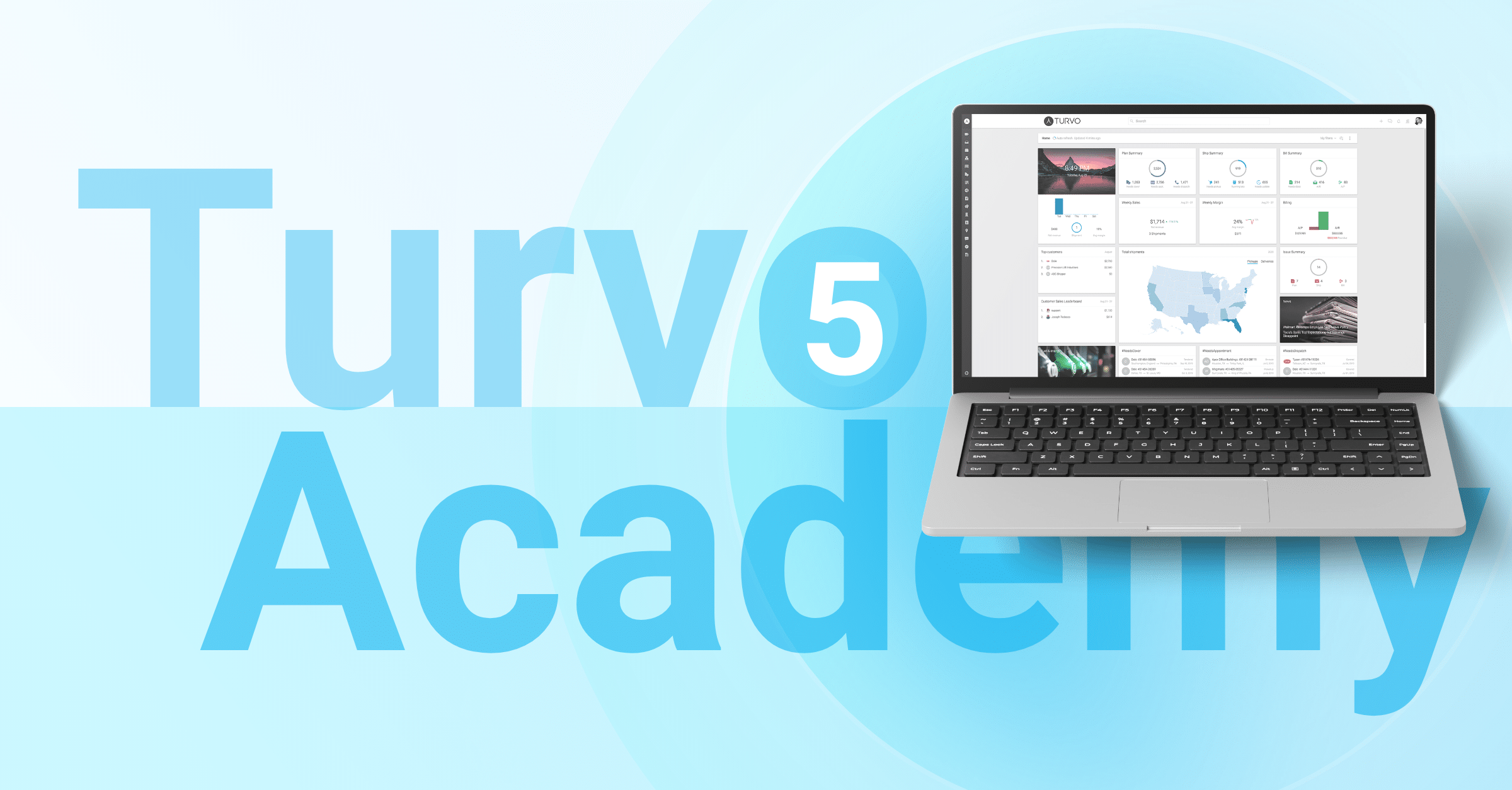In this Interview, Mary O’Connell, Fusion Host speaks with Kyle Wegman, Vice President of Product at Turvo, about the software partnership between Turvo and SONAR. Learn about the benefits, challenges, and best practices for integrating software systems in a way that brings the most value to the end user.
Transcription
Mary O’Connell:
Hello and welcome to the Minting Show Fusions. Today, we are joined by Kyle Wegman, the Vice President of Product at Turvo! Thank you so much for joining us today, Kyle.
Kyle Wegman:
It’s a pleasure. Thanks for having me.
Mary O’Connell:
This is kind of one of my favorite things to do, you know, to get to talk about a lot of these new integrations that we have. Before we get too far into that, let’s get some background on you and how you ended up at Turvo.
Kyle Wegman:
Sure. I’ve been in the industry for years now, and in terms of making software, I’ve kind of had the whole journey. I started off as a user of a TMS system. I did that for a few years at a huge shipping company. Then I moved on to working for that software company as a consultant, going to other businesses like the one I worked at and helping their users understand how to really utilize technology to build up their business. Then that led me into product at another TMS company, which brought me here to Turvo. I was really looking for who’s that next big company that’s going to come along and change the industry, and I found the opening at Turvo, and I’ve been having a blast here ever since.
Mary O’Connell:
I kind of like that, you know, they always say if you enjoy what you do, you never really work a day in your life, but I mean, you know, it’s, I like to think Turvo could be the next big TMS. You never know. I love that.
Kyle Wegman:
I like to say that we’re the biggest of the new players and the newest of the big players in the market.
Mary O’Connell:
I like it. I think that’s actually a pretty good way to look at it. For those who might not know Turvo, most recently integrated with Sonar Track Rates into the platform. In your opinion, what are the benefits that these extra software integrations have for businesses and how does it help streamline operations?
Kyle Wegman:
Software, in general, is key to all the companies in our industry. You have to have that technology base or you just can’t compete anymore. So software brings so many benefits, so many automations of things that used to be manual in our industry. I could talk about it all day, and I often do. But with integration specifically, it’s really that it allows companies of all sizes to achieve better outcomes at lower prices. I like to say that it really all comes down to everything in one of the buckets of collaboration, visibility, productivity, or intelligence, and they kind of all work together. But where integrations help is it used to be that a lot of companies were just out there building their solutions. Every big company was out there developing its solution to all of these problems. So there is this huge distinction between the big companies and the smaller ones. But now, because we’re seeing these companies develop integrations and sell them to everyone else, you’re getting those better outcomes, better than you could, no matter how much money you had because you’re bringing a lot of data together from different companies, you’re getting all those different inputs, and you’re serving the different groups of our industry. But then the cherry on top is that it’s coming at a lower price that everyone can actually afford. You don’t have to have every single company going and hiring all their developers and building their solutions for things. And when you bring all the data together, you get a better outcome at a lower price. So that’s really the best part, I think, of the integrations that we have in our industry.
Mary O’Connell:
I think that’s also one of the more overlooked parts is that you don’t necessarily have to reinvent the wheel. You can just steal a tire off your neighbor’s car, and you know it should work pretty well to get your car moving.
I mean, I’ve worked for companies that have used nice TMS’s and are brand new and have used legacy systems and then tried to get them to work together, and it’s not always worked well. You know, it doesn’t work well, and nothing against building your own, obviously. If there’s not something out there that really fits what you’re looking for, sometimes you’re left with that option to build your own. But I think one of the biggest things that people kind of forget is that there are so many options out there. So you don’t have to go through and hire your own dev team and create a two to three-year roadmap for building this thing from scratch. You can just go out and buy one, and you don’t have to always have a bajillion dollars at hand to pay for it. It’s honestly, most of them are what I like to consider extremely affordable now because there are a lot more players, and it’s not just the three that are like, “You will pay this million-dollar-a-year fee.”
Kyle Wegman:
You’re dead on right. And when I started in the industry, it really was just a small number of integrations that were out there, of these third-party companies offering these similar solutions like tracking was just starting to take hold years ago, and it was really expensive. They were so valuable that a lot of those TMS companies could charge a bunch of money to set up that integration for you, and you would still see that return pretty quickly. One of my favorite things that we’ve done at Turvo is we try to make it as fast and cheap as possible to bring in those connections and maybe try different companies out. So we have this thing we call our Integration Hub, and literally, you can go in. It’s all self-service, and you just click through. You do it yourself. You can build all your integrations in a day, and we don’t charge you a thing for it.
Mary O’Connell:
That’s pretty rare to find. Almost everyone loves to add a little extra upcharge for another service. That’s impressive. Well done, guys.
Kyle Wegman:
Thank you. It’s something that our customers love seeing, and we’re always investing in it. I have a whole team within our product organization that that’s all they work on.
So there’s always new partners coming along. I think that’s really what’s changed in the TMS industry is back in the day, TMS’s enabled companies to build their versions of all of these things, and a lot of them tried to make their version that would compete with every one of these solutions out in the market. Versus now, we see ourselves as more of a Switzerland of being that central command hub that brings all that information together from wherever you may get it.
Mary O’Connell:
It’s just kind of that you don’t need to go through 10 different screens to try and book a load or know what’s going on in a market. You can just go to one spot, or you know, build it however you want to build it because everyone’s process is different. And if there’s one thing I know, it’s going through 10 screens to book one load is absolutely horrible and miserable, and no one should have to do it.
Kyle Wegman:
Oh, absolutely. And every one of those things that a company like Freight Waves is out there making, and all the other partners in the industry, no matter how much money you give me, I’d have a tough time going out and competing with you all because you’re focused on your one use case. So rather than compete, we just try to bring the benefits of what you guys are doing to our customers as quickly and cheap as possible.
Mary O’Connell:
I like it. It’s the, I’m not going to try and outdo the thing that you’re really good at. I’m just going to say, “Do you want to use it for me a little bit? Can I have some of it? Can I just borrow some of your information? Because that’d be great.”
Kyle Wegman:
Yeah, it’s win-win for both of us. And you know what I mentioned of bringing all those different companies together and getting a better outcome than anyone could on their own, I think that the track rates are the perfect example of that. It’s any one of these big companies, no matter how much money they’ve got or how much you invest into it, ultimately, you’ve still only got your data. So within a TMS, a really key part of our whole workflow is that process of who’s the right carrier for me, what should I be paying them, and then how much for a brokerage, for a shipper, it kind of ends there. Who’s the right carrier, and what should I pay? And then when you get into providers and brokerages, it’s how much should I be charging my customer for this? And those track rates bring all of that from all those different sources where any one of those individual companies could never achieve as good a result as FreightWaves does by bringing them all together into one place. So it’s the perfect example of that benefit that integration brings to companies out there.
Mary O’Connell:
Yeah, you kind of need that one party because no one’s going to, like if everyone went out to try and get this data themselves, it’s not going to be as valuable. It’s not going to necessarily work to the same extent. So, I mean, I’m a pretty big fan of the track rates, but I’m a little biased.
Kyle Wegman:
Yeah, we see that come up a lot. And where that really started in the TMS industry was a lot of these interrate indexes. And that’s still valuable. I think Turvo definitely shows that we give our customers the ability to see what carriers have we used for this in the past, what have we paid for this in the past under different conditions, and how has it fluctuated over time? But then where our users really see a lot of benefit with something like track rates is sometimes they look and see, “Man, our strategy has been completely wrong on this lane we’ve been running. We are so far off from the market. We’re paying way more than the market. We fluctuate differently when the market goes down, we tend to go up.” And getting that outside perspective is just immensely valuable, and it brings confidence to that whole process for the businesses, knowing that they, brokers or their purchasers, are going the right way. And also, just as those individuals, knowing when they talk to a carrier, “Okay, I’m in the right ballpark. I can move on and go about my day.”
Mary O’Connell:
I kind of like that part. It’s really that everybody’s working together to come back to one general thing, and that’s serving your customers the best you can. I guess when it comes to Turvo as a TMS, what is kind of the benefit that the end user gets? What kind of streamlined processes, what’s that overall benefit that they end up seeing at the end of the day?
Kyle Wegman:
What Turvo prides ourselves on the most is collaboration and good design. When we bring in new salespeople, when I bring in new software engineers, sometimes it’s really hard to find engineers that have been working in the industry for 20 years. So sometimes you get software engineers that know nothing about our industry. The first thing that I show them is I have this whole slideshow of our user interface and our design principles against all of our competitors and the big players in the market. We just look different, we design different, and we have the benefit of being a new company and using all this new technology. But to answer your question, we really like to build these well-designed little cards and tiles in our software that summarize so much information into one great little visualization. So for the track rates, that’s where we have what we call our Rate Insight card. We plug the data in that we get from the track rates of really everything that you get by looking in there. The market rate, the 12-month running average, and how that’s changed and the trends. And we condense it all into one card and we put that right on that page that we call our carrier tab, where you go to make that decision of who’s the right carrier for me and what should I be paying them. So really quickly, at a glance, the users can soak in all of that information at once and make that decision really quickly and with confidence and just move on with their day.
Mary O’Connell:
I like it. It’s that, I’m a sucker for something that’s in a card because it just makes it physically draw your eye there. It breaks it down. It’s just like you just need to catch these few things and then move along. I just, I’m a sucker for a good card, man.
Kyle Wegman:
We love it. There’s what you used to see in the industry is you would just get a number. You would get, here’s the average, but you didn’t really know, is this at a high point today because of volume changes or weather changes or whatever it might be? Is this above average? Are we running right at the normal average right now? Can I rely on my historical rates here? There’s a lot more of a picture to be told, to be painted and a story to be told than you get from just a number. So we plug it all into those cards. Freight Waves provides us with a lot of great data, and we’ve designed a really great visualization that our users love that condenses that all in one place.
Mary O’Connell:
It really is handy because then you also, it’s all at your fingertips. You don’t have to go looking for it and say, “Oh, let me, this is a little high today. I should go research it.” It’s literally just right there in a card waiting for you just to hover over it, look at it, and just go, “Oh, okay, this is why we’re high today. All right, well, we’re going to increase our rate a little bit, and then we’ll move on.”
Kyle Wegman:
Exactly. And it helps with that negotiation with the customer for brokers or providers who then also have to determine that sell rate that they’re selling it out to the customers at. A lot of times, the best brokers and agents are the ones that can tell a good story. Their customers will notice why freight is up for that day, and it’s something that they’re really not under control of. They’re just at the mercy of the market. And being able to go to your customer and quickly tell that story and give that explanation for what’s going on at the time just streamlines that process and gets them in and out as quickly as possible.
Mary O’Connell:
I absolutely love it. If we are running out of time today, but if anyone wants to reach out about any kind of TMS solutions or if they have questions about Turvo, where can they find you?
Kyle Wegman:
https://www.linkedin.com/in/kyle-wegman/
Mary O’Connell:
Thank you so much for joining us today.








